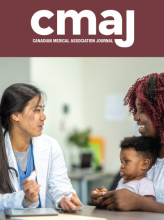Aspiration pneumonia causes 5%–15% of community-acquired pneumonias and an unknown proportion of hospital-acquired pneumonias1
Microaspiration is normal in healthy people and contributes to most causes of pneumonia. In contrast, aspiration pneumonia arises after a macroaspiration event. The mortality rate for aspiration pneumonia is more than twice that of other pneumonias.1
Aspiration pneumonia is a clinical diagnosis and is differentiated from other pneumonias based on clinical history and radiographic features
Risk factors include dysphagia and altered level of consciousness.1 Macroaspiration events are usually unwitnessed but may be elicited on history.1 Suggestive radiographic features include a right lower lobe infiltrate on chest radiography. Computed tomography may show bronchopneumonia or bronchiolitis in a gravity-dependent distribution.2
Routine anaerobic coverage is not indicated
Anaerobic bacteria are not major pathogens in aspiration pneumonia.3 A current guideline recommends that aspiration pneumonia be treated with the same antibiotic regimen as community- or hospital-acquired pneumonia,3 and that additional anaerobic-specific coverage (e.g., clindamycin, metronidazole) should be given only to patients with empyema, abscess or necrosis.3
Aspiration pneumonitis is clinically distinct from aspiration pneumonia, and management differs accordingly
Aspiration pneumonitis is an acute chemical lung injury from inhaled gastric contents immediately following an aspiration event.4 It is distinct from pneumonia because symptom onset is rapid (minutes to hours) and resolution occurs after 24–48 hours. It is managed with supportive care that maintains airway and oxygenation, such as oropharyngeal suctioning and supplemental oxygen.4 Aspiration pneumonitis is not a consequence of infection and does not benefit from antibiotic therapy.4
Macroaspiration is not an indication for gastric tube feeding
Compared with oral feeding, feeding by nasogastric or percutaneous gastrostomy tube does not decrease the risk of aspiration or pneumonia.5 Routine measures to prevent aspiration pneumonia include swallowing assessments, positioning during feeding, texture modification of diet and mouth care.1
CMAJ invites submissions to “Five things to know about …” Submit manuscripts online at http://mc.manuscriptcentral.com/cmaj.
Footnotes
Competing interests: None declared.
This article has been peer reviewed.
This is an Open Access article distributed in accordance with the terms of the Creative Commons Attribution (CC BY-NC-ND 4.0) licence, which permits use, distribution and reproduction in any medium, provided that the original publication is properly cited, the use is noncommercial (i.e., research or educational use), and no modifications or adaptations are made. See: https://creativecommons.org/licenses/by-nc-nd/4.0/











